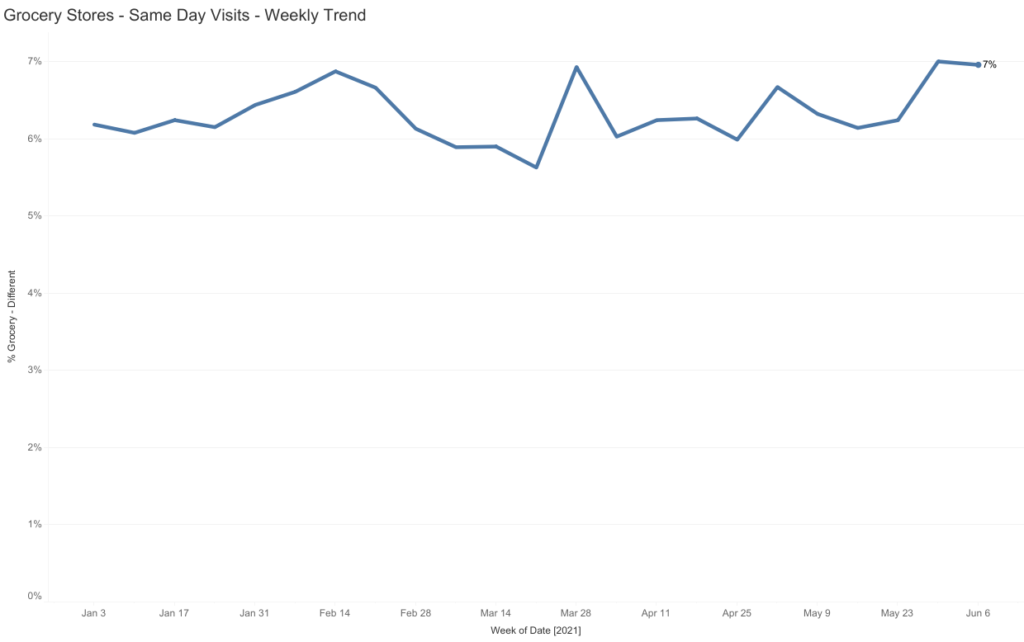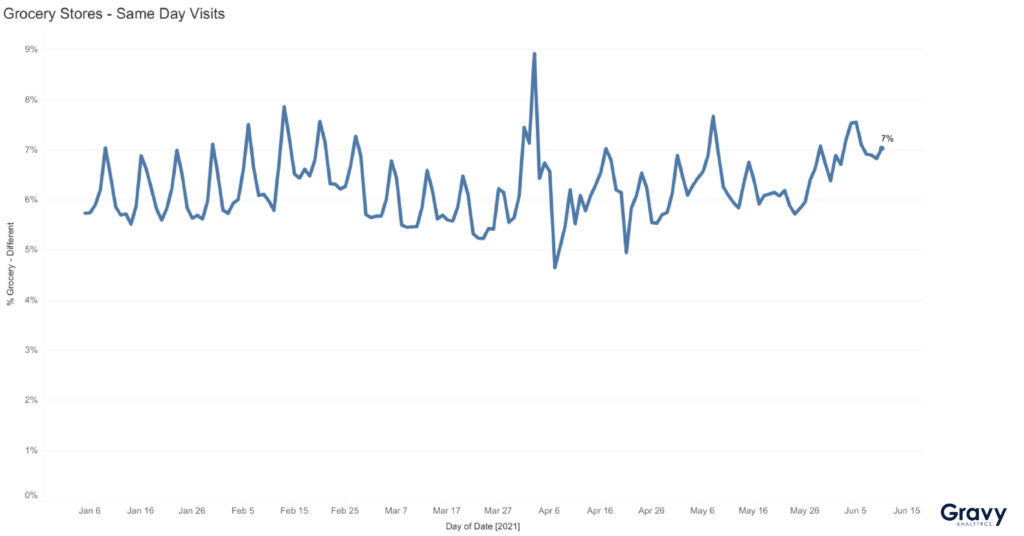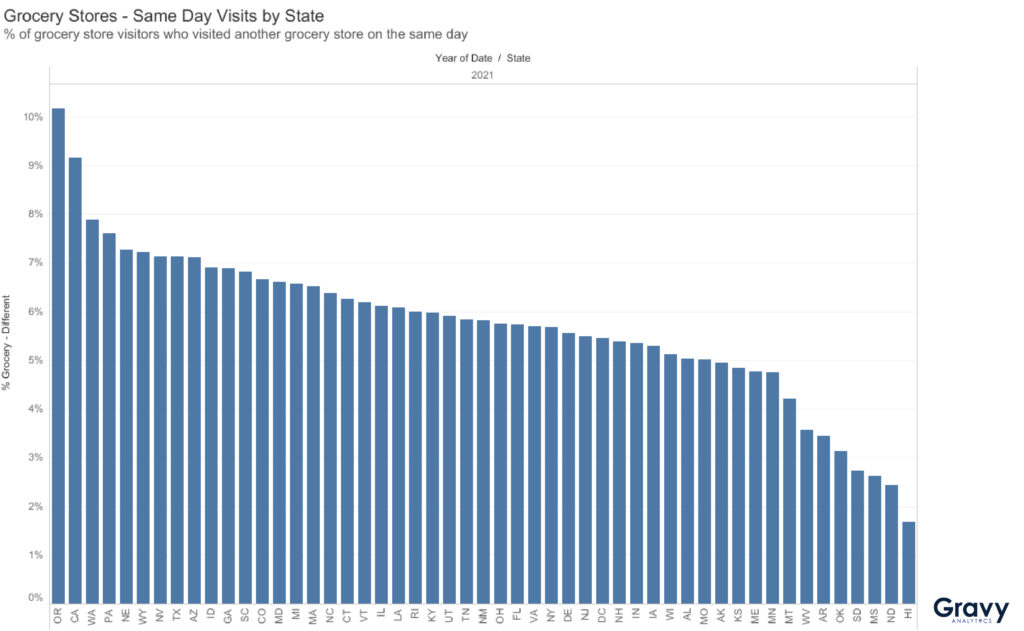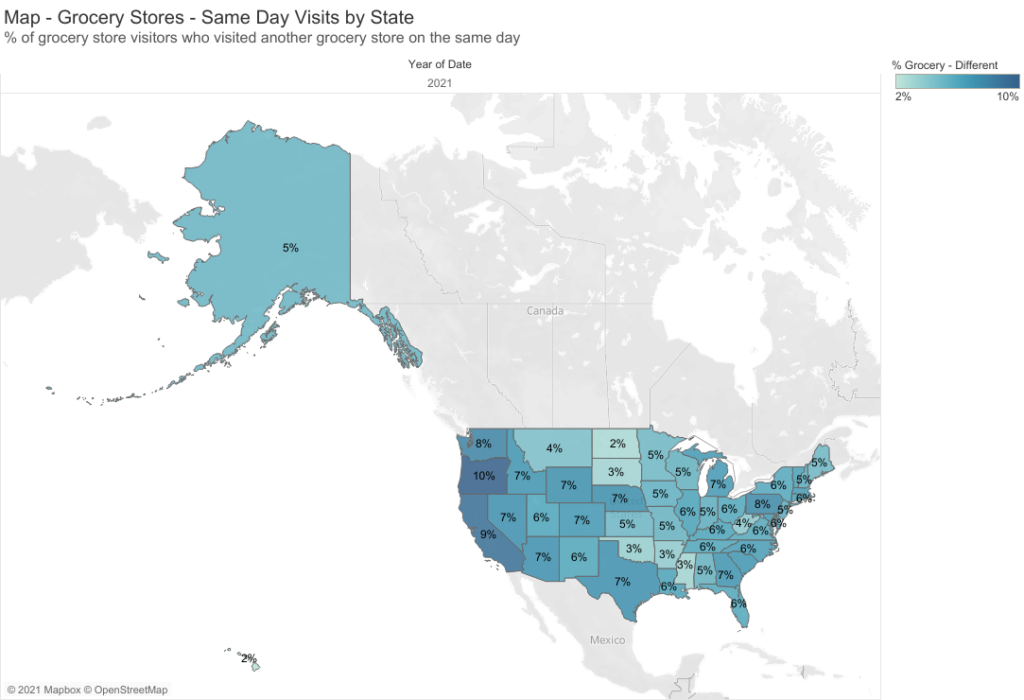Grocery Shopping Behavior: Multi-Store Shoppers
July 26, 2021

Due to the COVID-19 pandemic, consumer shopping habits have changed, particularly when it comes to how they prefer to shop for groceries. Not too long ago, many consumers opted to have their groceries delivered instead of shopping in-store.
For some consumers, brand loyalty and preference cause them to visit the same grocery store time and again. For others, they prefer to visit multiple grocery stores in one day to find the best deal and get everything on their shopping list. We analyzed U.S. grocery shopping behavior in 2021 so far by looking at same-day visits to two or more grocery stores.

Weekly Grocery Shopping Behavior: Same-Day Visits
As of the week of June 6, 2021, just 7% of U.S. consumers were visiting 2 or more grocery stores on the same day. This percentage has remained relatively stable and indicates that most consumers are finding everything they need at just one grocery store. Weekly visit trends, however, do show small spikes during specific holidays. Let’s take a closer look at the data by day to understand which holidays had the most impact.

Same-Day Grocery Shopping Behavior
February saw the first spike in the number of same-day grocery store visits. This could be due to consumers visiting multiple grocery stores on Valentine’s Day to find ingredients for dinner. However, the largest increase in same-day grocery visits happened in early April: Easter Sunday and Passover are both grocery-heavy holidays. With these two holidays so close together, it is possible that grocery stores ran out of specific items, forcing shoppers to visit multiple stores to get what they needed for holiday recipes.
Similar increases in same-day visits to grocery stores happened in early May, around the same time as Cinco de Mayo and Mother’s Day, and again in June, during Father’s Day. Again, more consumers are likely going to multiple grocery stores to stock up on ingredients for holiday meals.

Same-Day Grocery Shopping Behavior by State
Consumers living in Hawaii, North Dakota, and Mississippi are less likely to visit multiple grocery stores on the same day than consumers living in other states. It is possible that consumers living in these states have to travel longer distances to visit multiple stores.
For example, consumers in North Dakota might have to travel much further to visit another grocery store than those in a more densely populated state like Massachusetts. This could cause them to do most of their shopping at one store rather than take multiple trips.
States with the most same-day grocery store visits: Oregon, California, and Washington. The data tells us that West Coast residents are more likely to visit multiple grocery stores on the same day, and could indicate that there are more grocery stores in close proximity to choose from in those states.

Regional Trends: Same-Day Grocery Shopping Behavior
Visualizing the same data on a map adds additional perspective. People on the West Coast are much more likely to visit multiple grocery stores on the same day than people in the rest of the country. Folks residing in the Midwest are the least likely to visit multiple grocery stores on the same day. Those along the East Coast fall somewhere in the middle. This likely has a lot to do with proximity and distance to various grocers, but also the variety and availability of goods carried by the region’s grocery brands.

Real-World Insights on Grocery Shopping Behavior
With more people vaccinated against COVID-19, in-store grocery shopping is more comfortable and less risky than in 2020. Consumers are slowly going back to the grocery store aisles in person again, with some even visiting multiple stores on the same day to fulfill their grocery needs. With location intelligence, brands can get near real-time insights into consumer trends for their area or industry. For more information on how to analyze consumer trends with location intelligence, contact us to speak with an expert today.




